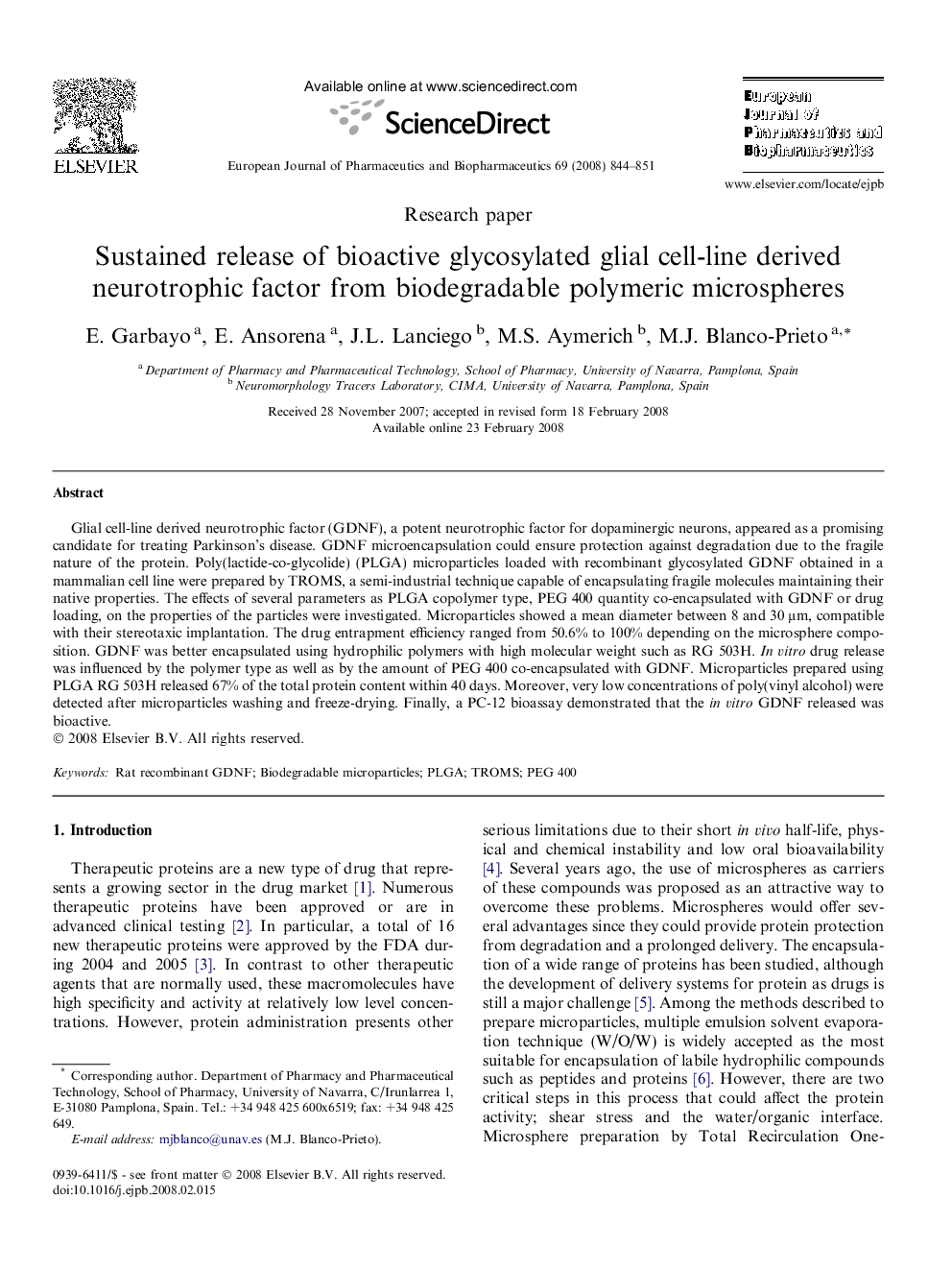| Article ID | Journal | Published Year | Pages | File Type |
|---|---|---|---|---|
| 2084596 | European Journal of Pharmaceutics and Biopharmaceutics | 2008 | 8 Pages |
Glial cell-line derived neurotrophic factor (GDNF), a potent neurotrophic factor for dopaminergic neurons, appeared as a promising candidate for treating Parkinson’s disease. GDNF microencapsulation could ensure protection against degradation due to the fragile nature of the protein. Poly(lactide-co-glycolide) (PLGA) microparticles loaded with recombinant glycosylated GDNF obtained in a mammalian cell line were prepared by TROMS, a semi-industrial technique capable of encapsulating fragile molecules maintaining their native properties. The effects of several parameters as PLGA copolymer type, PEG 400 quantity co-encapsulated with GDNF or drug loading, on the properties of the particles were investigated. Microparticles showed a mean diameter between 8 and 30 μm, compatible with their stereotaxic implantation. The drug entrapment efficiency ranged from 50.6% to 100% depending on the microsphere composition. GDNF was better encapsulated using hydrophilic polymers with high molecular weight such as RG 503H. In vitro drug release was influenced by the polymer type as well as by the amount of PEG 400 co-encapsulated with GDNF. Microparticles prepared using PLGA RG 503H released 67% of the total protein content within 40 days. Moreover, very low concentrations of poly(vinyl alcohol) were detected after microparticles washing and freeze-drying. Finally, a PC-12 bioassay demonstrated that the in vitro GDNF released was bioactive.
